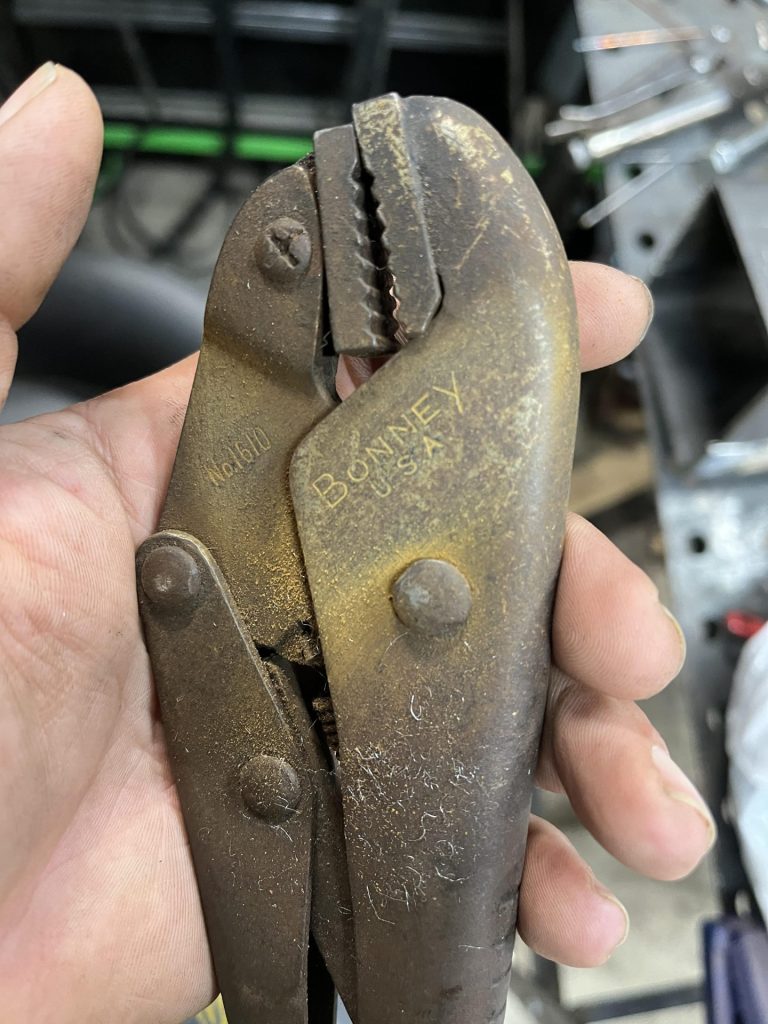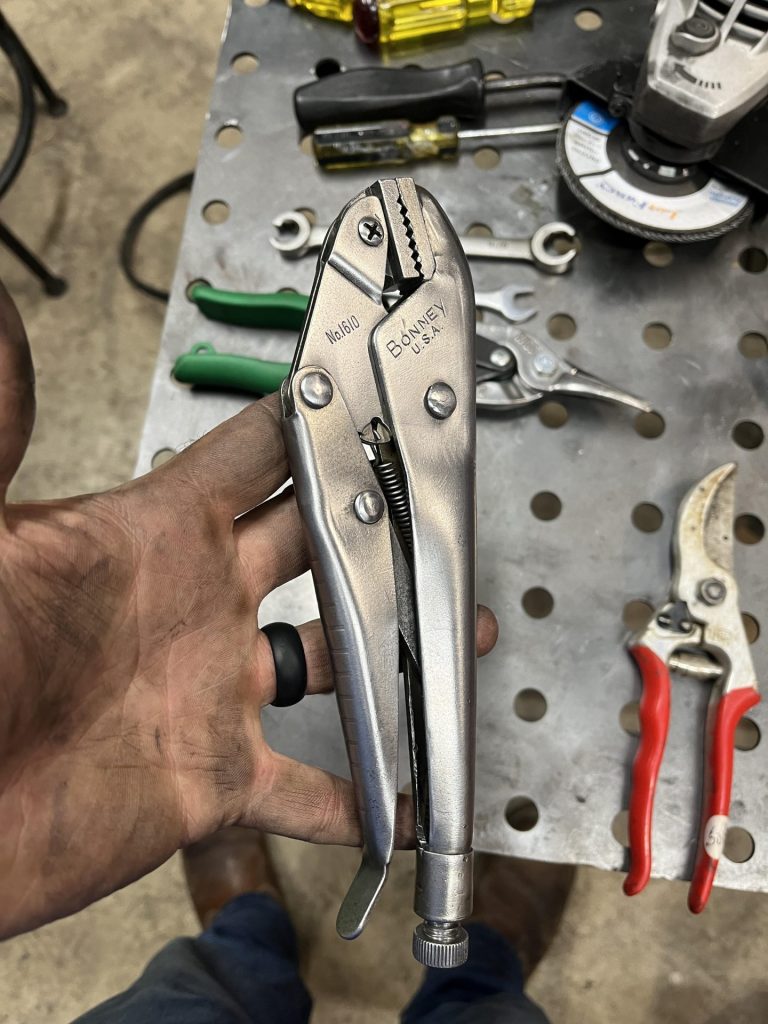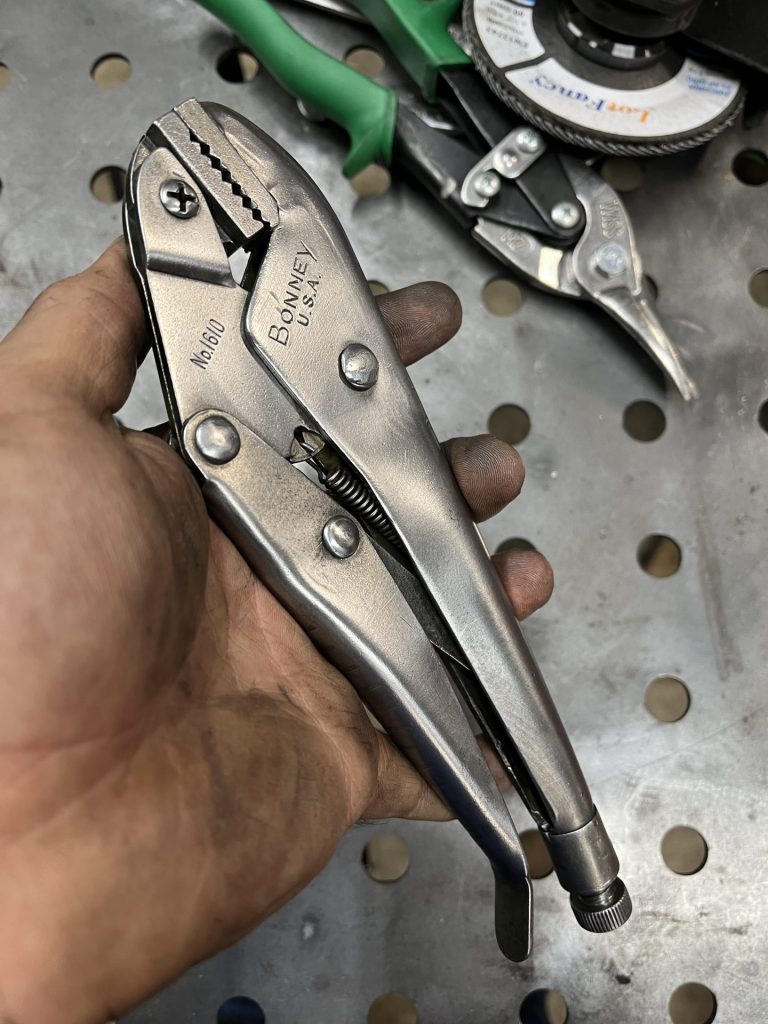In the world of vintage tools, Bonney is a well know and fairly sought after name.
Founded in 1877 and originally called Bonney Vise & Tool Works, they began making vises and several wrench types. Over the years, Bonney’s line of tools vastly expanded. For a more in depth history of Bonney, start with the Alloy Artifacts database.
We aren’t going to talk about Bonney’s entire history here, but rather one particular set of pliers I acquired at an estate sale. Those would be the Bonney 1610 locking pliers. The pliers have a few features worth noting.
The 1610 pliers are similar to modern Vise-Grip style locking pliers in that the jaws can adjust to different widths, and they have a locking/clamping action to exert more force than usually possible by hands alone. You may see one big difference, however. They do not have the extra locking lever.
These pliers also feature a pivoting bottom jaw. This feature allows the jaws to stay more parallel with each other than a fixed jaw would on square objects. It also allows some flexibility in gripping uneven surfaces.
I picked these pliers up in very rough and dirty state. So much so that I’m not sure I even knew they were a Bonney tool at the time I purchased them. I bought many tools as a lot that day and started sorting through them to see what all was there. With a closer look, I determined they were a Bonney product, and decided to do my best to restore them to their former glory.
I started out by uncovering the stampings on the pliers so I knew what I was working with. Bonney No. 1610 it was!

After that, I hung them in my electrolysis bucket to remove the rust and loosen the dirt and grime. After a few hours in the bucket, I removed them and started cleaning them up with various brushes.

Usually I will try and date a vintage tool to the best of my ability. If it is a quality tool, the age doesn’t matter much in the grand scheme, I just like knowing for the sake of knowing.
The quest to date these pliers was when I realized there is almost no mention of them anywhere on the internet. I thought that was a little unusual since Bonney has a pretty big following and many collectors.
Search results only provided a few vague forum posts of someone saying they had a pair, and they are listed in some Bonney catalogs from the late 1940’s and early 50’s that were scanned in to the Internet Archive. They also list the 1607 pliers which are the same design, but smaller. The first two digits are the type of plier, the last two digits are the size in inches.
It is pretty obvious that the Bonney 1610’s were made by Seymour Smith. They are Identical to each other aside from the branding and share the same model number. Luckily there is a decent amount of information available for the Seymour Smith Snap-Lock line of pliers, and a lot can be assumed about the Bonney variant.

Interestingly, the Bonney 16 series pliers appear in catalogs from 1947 and 1951. Meanwhile, Seymour Smith already had a patent pending in the late 40’s for what would be the 26 series pliers (or plier wrench as they liked to call it) and were already producing them in 1948, if not earlier.
Here are my 2610 pliers for reference showing a “patent pending” stamping:

Unfortunately there are several year gaps in the Internet Archive of Bonney Tool catalogs preventing a more exact year range that the 16 series pliers were included in the Bonney line.
In the late 40’s and early 50’s Bonney catalogs, there are no signs of a 26 series plier offered. In fact, I didn’t find any reference to Bonney ever offering a 26 series locking plier at all. I could be mistaken, as I said there are several gaps in the catalog archives, but there is no evidence that they did.
For reasons I’m not sure of, it seems Bonney never made the switch to the 26 series, and continued to offer the 16 series well after Seymour Smith was producing the 26 series.
These Bonney 1610’s are a neat find and cleaned up well. Like a lot of old tools, research can lead to many dead ends, or be obstructed by missing or incomplete information. It is just a part of the vintage tool hobby.
